Frequently Asked Questions
about ZC4H2 Associated Rare Disorders (ZARD)
These are questions that are often asked by parents and the community. We hope you find these answers helpful. We also encourage you to connect with us through our Facebook support groups for additional information.
If you have suggestions for additional questions, we will be happy to consider them for the website. Please e-mail them to connect@zc4h2foundation.org.
We encourage medical professionals to refer to the currently available published research here or to refer to report on ZARD published by the National Organization for Rare Disorders (NORD).
In our community, we consider nomenclatures (names) such as “Wieacker-Wolff Syndrome”, “Miles-Carpenter Syndrome”, “Intellectual disability-developmental delay-contractures syndrome” or other nomenclatures currently listed in public databases to be partial descriptive terms for our condition.
These nomenclatures were either adopted from previous publications or utilized without corresponding publication in some public databases.
The publication of Wieacker & Wolff in 1985 described 6 males from a single family with similar clinical features. A few years later, in 1991, a separate publication by Miles & Carpenter described a family of males with a severe clinical presentation and their female relatives with milder presentations. Both papers proposed those presentations to be novel syndromes. Years later, in 2013 and in 2015, scientists found that the families described in those papers had pathogenic mutations in the ZC4H2 gene.
The term “Wieacker-Wolff Syndrome” and sometimes the term “Miles-Carpenter Syndrome” have since then been utilized to refer to anyone with a diagnosed mutation on the ZC4H2 gene. However, as we now know, the symptoms first described by Wieacker & Wolff in those 6 individuals and by Miles & Carpenter in their paper are not entirely representative of our current patient population. We now know that the clinical presentation (phenotype) of those with a mutation on the ZC4H2 gene varies tremendously, not only among males but also among females. ZARD is a spectrum, of symptoms and severities, rather than a defined list of symptoms.
Partial and/or inaccurate descriptive nomenclatures for this condition have important consequences for patients and their families: not all the patients present the same symptoms. Grouping these variable conditions under a descriptive name (often used to describe severe cases) can wrongly define the condition for many patients. As ZARD becomes more diagnosed, the spectrum of severity continues to evolve to include a wide range of symptoms and severities. Practical consequences of inaccurate “disease labeling” can include: lack of access to appropriate care or provision of inadequate care; negative social perception; lack of acceptance and inclusion; lack of accessibility to education or insurance; inappropriate dispensation of resources, etc. Therefore, is it relevant and important to adopt the accurate nomenclature when referring to this condition.
The 2019 publication by Frints et al., “Deleterious de novo variants of X‐linked ZC4H2 in females cause a variable phenotype with neurogenic arthrogryposis multiplex congenita”, proposes “ZC4H2 Associated Rare Disorders” or “ZARD” as the accurate nomenclature.
The Foundation advocates for the adoption and usage of “ZC4H2 Associated Rare Disorders / ZARD” as the only accurate nomenclature for our condition.
According to the “Wieacker-Wolff Syndrome” description, males are severely affected and females are mildly affected. The early publications included either only male patients (Wieacker & Wolff, 1985) or males and their female relatives who showed milder symptoms (Miles & Carpenter, 1991). Later on, when the ZC4H2 gene was linked to the families described in those publications, it was subsequently assumed that males with a pathogenic mutation in the ZC4H2 gene could be more severe than their female counterparts.
As access to genetic testing has increased with time and our patient community grows, we now know that both males and females with a mutation in the ZC4H2 gene can be affected with a great variation of symptoms and with different severities.
We now know that “Wieacker-Wolff Syndrome” is not a complete or accurate diagnosis to describe the condition.
The Foundation advocates for the adoption and usage of “ZC4H2 Associated Rare Disorders / ZARD” as the only accurate nomenclature for our condition.
As the name “Wieacker-Wolff Syndrome” has been linked to the ZC4H2 gene since 2013 and is listed in most public databases accessed by geneticist and clinicians worldwide, it is not unusual that patients with the characteristic symptoms and a confirmed mutation in the ZC4H2 gene receive the diagnosis of “Wieacker-Wolff Syndrome”.
Please refer to the previous question.
The Foundation advocates for the adoption and usage of “ZC4H2 Associated Rare Disorders / ZARD” as the only accurate nomenclature for our condition.
It is inaccurate to refer to a patient as “having ZC4H2” because every human has the ZC4H2 gene. It is also important to understand that not all mutations in the ZC4H2 gene cause clinical symptoms. When a mutation in the ZC4H2 gene is thought to causes the observed clinical symptoms (i.e., a clinical phenotype), geneticists refer to it as a pathogenic mutation or a pathogenic variant. Therefore, patients with ZARD have a mutation in the ZC4H2 gene which may be causative of the symptoms. Every person with ZARD also has a unique clinical phenotype for ZARD, which means, how the condition expressed in him or her as a result of the mutation.
A syndrome is defined as a number of symptoms occurring together and characterizing a specific disease. Given the high variation of symptoms and the high variation of severity of presentations among patients with ZARD, the term “disorders” is more accurate. ZARD is a spectrum of different symptoms and severities.
It is not accurate to refer to it as a deficiency either, as the terminology “deficiency” is commonly used for disorders caused by a defective or missing enzyme.
Mutations in the ZC4H2 gene can be inherited through an -unaffected or mildly affected- carrier mother or appear spontaneously in a de-novo affected patient.
In very rare cases, healthy females who carry a ZC4H2 mutation in a small number of cells (gonosomal mosaicism) can pass the mutation to their children. Likewise, in very rare cases, healthy males may have (somatic/germline) mosaicism for a ZC4H2 mutation and they will transmit this variant to all their daughters. Males cannot pass the ZC4H2 gene variant to their sons because they always pass their Y chromosome instead of their X chromosome to male offspring.
There is a great variation of symptoms and severities in both male and female ZARD patients. An individual patient can present with a few or many symptoms.
Motor planning impairments are a commonality shared by all patients. This observation stresses the broad clinical spectrum of ZARD patients.
Symptoms observed in almost all cases to date (in varying severities) include: delayed motor development (mobility), orthopedic problems (including but not all present in each case: dislocations of hips and knees, bone malalignments or deformities), and issues with muscle tone and oculomotor apraxia. In addition, almost all ZARD patients present with congenital contractures in hands and fingers, with a characteristic proximal insertion of thumb and first toe.
Symptoms present in most patients (in different severities) are: difficulty swallowing, at least early in life, respiratory complications at least early in life, apraxia of speech, delayed cognitive development, spinal complications including tethered spinal cord and scoliosis. Most patients also have a diagnosis of Arthrogryposis Multiplex Congenita (AMC). AMC is defined as multiple joint contractures that involve at least two different body areas before birth.
Other symptoms in some patients include epilepsy, cortical visual impairment, autism, vascular and cardiac problems, GI problems.
Important to note: as cases continue to be identified and the clinical spectrum continues to broaden, we observe that the severity of all above mentioned symptoms appears to vary significantly among patients. In addition, symptoms and their severity can vary at different stages in life. Although there is no evidence of progression or regression in the condition, we observe that orthopedic and musculoskeletal symptoms can appear or worsen with aging, possibly as result of growth or factors such as prolonged illness and surgery recovery.
Associations of ZC4H2 mutations with shortened life expectancy are largely unknown; there have been cases of death due to respiratory complication in infants, children and teenagers. However, adult, middle-aged and elderly patients with ZARD have been described in the literature or are known among the patient community.
To date, there is no evidence of primary progression/degeneration in patients with ZARD. ZARD is not considered to be a primarily degenerative disorder. However, secondary neurologic and/or neuromuscular degeneration could possibly develop in the absence of appropriate supportive therapeutic and medical interventions. In addition, we observe that with growth, surgeries, or prolonged illness or immobility, symptoms can appear or worsen.
It has been observed that early and consistent supportive therapies (Physical Therapy, Speech Therapy, Occupational Therapy) could result in improvement.
To date, there are less than 250 diagnosed patients with ZARD worldwide. De-novo variants of ZC4H2 have been more frequently seen in affected females than in males with ZARD, while inherited variants are more seen in affected males. In total, there are currently more diagnosed female that male patients.
Primary specialists would include: Pediatrician/ Primary Care provider, Orthopedic Surgeon, Neurologist, Geneticist, Physiatrist, Pulmonologist, Physical Therapist, Occupational Therapist, Speech Therapist, Orthotist.
Other specialties: Ophthalmologist, Neurosurgeon (specifically tethered cord diagnosis), Gastroenterologist, Endocrinology, Cardiology, Epileptologist, Anesthesiologist, Teacher of Visually Impaired (usually through school system), Developmental Pediatrician, ENT doctor Specialty clinics including Cerebral Palsy clinic, Spasticity clinic, Neurodevelopmental & Musculoskeletal clinic, and Arthrogryposis clinic have also been helpful.
Further information on each specialty can be found here.
A diagnosis of ZARD may be considered based upon a thorough clinical evaluation, a detailed patient and family history, and the identification of characteristic findings.
Molecular genetic testing for ZC4H2 gene mutations (gene sequencing, panel next generation sequencing and microarray analysis) is available to confirm the diagnosis.
Your clinical geneticist is the indicated specialist to consult for genetic testing and genetic counseling.
Despite the growing number of affected individuals, there is currently no evidence for a clear relationship between the genetic defect and the clinical symptoms. In other words, there is currently no evidence for a clear genotype‐phenotype correlation. Also, the presentations of patients who carry the exact same ZC4H2 mutation (variant) can vary greatly between individuals. These differences in the expression of the condition have even been observed between individuals of families carrying the same ZC4H2 variant.
Nevertheless, with more and more patients being reported in the medical literature some picture seems to emerge.
We don’t know for sure. In theory, the possible changes occurring in the ZC4H2 protein (the product of the ZC4H2 gene) as consequence of a pathogenic mutation, could affect the way in which the ZC4H2 protein works and therefore its biological function. Other genetic and environmental factors may also be involved and could have an impact on phenotypic variability and severity of ZARD.
More understanding of the function of the ZC4H2 gene and its protein product are necessary to reply to this question accurately.
However, in girls, the differences in symptoms and severity, ranging from very mildly to severely affected, may be partially explained by the process of X‐inactivation within specific affected cells and tissues.
X-inactivation is a naturally occurring process in all women, by which one of the two copies of the X chromosome is randomly inactivated early in development. ZC4H2 is one of the genes on the X chromosome that gets “silenced” through this process. X-inactivation is thought to occur randomly in healthy women. We don’t yet know how this process is altered in girls with a mutation in the ZC4H2 gene but it may result either in a favorable or unfavorable expression of the affected ZC4H2 gene.
In ZARD, symptoms and their severity vary greatly from individual to individual. Not all individuals are affected equally, making it almost impossible to have a prognosis.
As we gain more knowledge through patient data and scientific research, the Foundation hopes to support the development of viable therapies to help our children and adults live to their full potential. Meanwhile, the Foundation will share current research findings and observations from the ZARD community to help families and their patients’ medical provider determine the best clinical treatments for their loved one.
A Variant of Unknown Significance (VUS) or Variant of Uncertain Clinical Significance (VOUS) is a genetic change that is not well understood and for which there is insufficient evidence to interpret the variant as likely to be causative or causative of clinical symptoms.
The distinction between which of the ZC4H2 genetic variants do not affect ZC4H2 protein function -and are therefore unlikely to cause disease- and which of the variants (probably) have an effect on ZC4H2 protein function -and are therefore (potentially) causative- is complex. There is currently no robust functional test available that would allow a VUS/VOUS to be declared a likely pathogenic or pathogenic variant.
Having a VUS/VOUS does not rule out that your kid has ZARD.
No. You didn’t cause it and you could not have done anything to prevent it.
We don’t know what causes ZC4H2 mutations. The human genome contains many gene mutations. Gene mutations are part of every form of life and part of evolution but not all gene mutations are pathogenic or cause problems.
ZC4H2 is a very important gene for the development of the human nervous system. When a mutation occurs in this gene, it can have a profound impact on the development of the embryo.
The ZC4H2 mutation may have been present in the genetic material contained in the male sperm or in the female egg, or may have occurred during the embryonic development.
Age of the parents, environmental factors, diet, fertility treatments or complications during pregnancy or labor are not known to be causes of a ZC4H2 mutation.
- Carrier mothers (mildly affected or non-affected) and affected female patients can pass the mutation to 50% of their daughters and 50% of their sons.
- Affected fathers will pass the mutation to all their daughters but none of their sons.
- If your child is a de-novo case, and you are not a carrier, the chances of having another child with ZARD are statistically slightly increased compared to the healthy population. This is because there is a (very small) chance that you have “mosaicism” (when a certain percentage of your cells, including sexual cells, carry the mutation).
- If you are a confirmed “mosaic carrier” (non-affected, male or female), chances of passing on the mutation to your child are percentwise undetermined, as you will not know what percentage of your sexual cells carry the mutation.

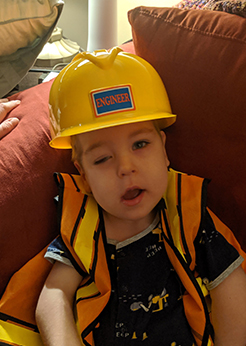
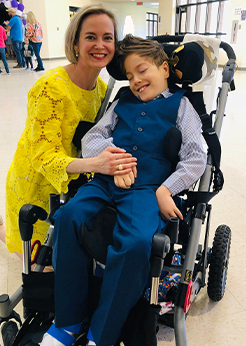
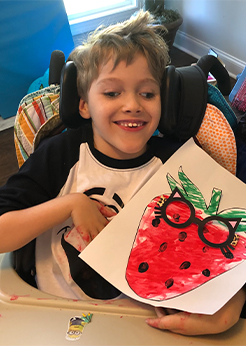
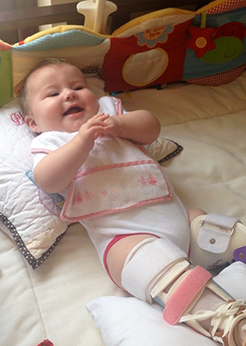
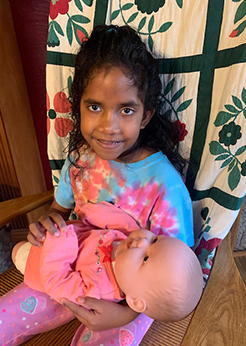
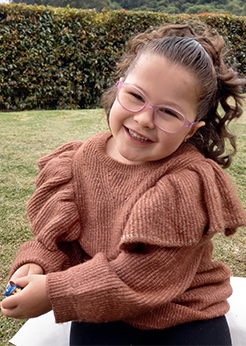
ZC4H2 Research Foundation, Inc. All rights reserved.
ZC4H2 Research Foundation has been recognized by the Internal Revenue Service as a 501(c)(3) organization. EIN: 87-4577599




